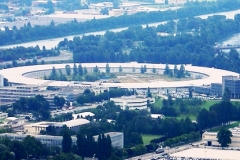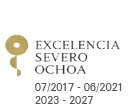
2009/06/22
CIC bioGUNE and the Biophysics Unit at the UPV/EHU to perform research at the ESRF in Grenoble
The European Synchrotron Radiation Facility (ESRF) has awarded a Block Allocation Group (BAG) to the Structural Biology Unit of CIC bioGUNE, to be used in collaboration with the Biophysics Unit at the University of the Basque Country (UPV/EHU) and the University of Cantabria. They receive, for a period of six months, funding to measure X-ray diffraction of biological macromolecules.
The ESRF, located in Grenoble (France), is an international institute, funded by 19 countries, operating Europe's most powerful synchrotron light source; it hosts 6000 scientific user visits per year. The use of the Facility by research groups is free due to the public funding that ESRF receives, although it must be approved by its scientific committee.
In their experiments to be conducted at ESRF, the crystallographers from CIC bioGUNE, UPV/EHU and the University of Cantabria will use a beam of high-energy X-rays (with a wavelength of about 1 Angstrom) to strike protein crystals. From the diffraction spectrum created in such a manner, the three-dimensional structure of these macromolecules can be determined.
The essential advantage that synchrotron radiation provides in comparison to the X-ray facilities commonly used in structural biology laboratories is that it enables the energy of the beam of light to be regulated, as well as being much more intense and smaller in diameter.
Overall, these features make it possible to obtain data on the three-dimensional structure of proteins at a very high resolution; this allows their biological function to be inferred more easily.
See a large version of the first picture





